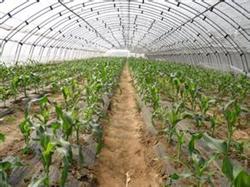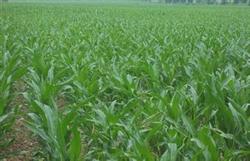Technical points of controlling Spodoptera litura at Seedling stage of Summer Maize

Spodoptera litura is a new pest in summer corn producing areas in China. Returning wheat straw to the field provides an excellent environment for Spodoptera litura to choose hidden and wet places to lay eggs and hatch. Once the peak period of larvae coincides with the maize seedling stage, and there is suitable precipitation, it is possible to cause serious harm. The main harm of Spodoptera litura is that the larvae bite on the base of corn stem and root, resulting in plant wilting and death, resulting in lack of seedlings, broken ridges and even seed destruction. This year, the two-point committee nocturnal moth will place more emphasis on the fields with high wheat straw coverage in the central and northern part of our province. Farmers should do a good job of self-examination and early prevention and treatment so as not to cause losses. Pest control in the field from June to mid-July is the second generation of Spodoptera litura, which is the most harmful to crops, so it is the main damage generation in the whole year. According to the investigation, the reason why Spodoptera litura rose from a general insect to a major agricultural pest is that the straw was returned to the field after wheat harvest, and the land was not ploughed when planting summer corn, resulting in the accumulation of a large amount of wheat straw, wheat bran and other mulch in the field. Spodoptera litura hides in it, lays eggs and reproduces larvae. The larvae are afraid of light, cool and dark under the cover, which is very suitable for their survival. According to the investigation last year, the larvae occurred unevenly in the field, and the corn seedlings covered with wheat straw and wheat bran did serious harm to the larvae, while the corn seedlings exposed in the rhizome had no harm to the larvae. During the period of the occurrence of the main damage generation of Spodoptera litura, appropriate methods should be adopted to control it according to its age. After harvesting wheat in the clean field, the wheat straw is treated centrally; conditional rotary tillage is used to kill stubble, so that there is no mulch in the field, so that the two-point armyworm will not be harmed to the corn field without a hiding place; after corn sowing, before emergence, the covering is 15 cm away from the sowing line, which can also significantly reduce the damage rate. Spraying adults to prevent the oviposition of Spodoptera litura can effectively reduce the number of larvae. From the first ten days to the middle of June, you can go to the field and touch the mulch such as wheat straw with tools in the afternoon. if a large number of moths fly, it shows that there are two-point armyworm hidden in this field and should be sprayed and killed immediately. 2.5% cyhalothrin EC 2500 times or 4.5% cypermethrin 1000 times or 48% chlorpyrifos EC 800 times or 30% acephate EC 600 times were sprayed uniformly throughout the field. In order to improve the insecticidal effect, 2000 times of Yitaibao EC can be mixed. Spraying adults can be carried out in combination with spraying closed herbicides. Spraying the 2nd instar larvae to control the insect pests in the larval stage was under the mulch between the corn ridges, the damage to the corn was not obvious, and there were no larvae around the corn seedlings. It is expected to enter the second instar stage of larvae from June 22 to 27, which can be controlled by spraying. It can be sprayed evenly throughout the field with 1000 times of 50% phoxim EC or 4500 times of 20% chloromethion benzamide suspension or 1000 times of 80% dichlorvos EC or 2000 times of 2.5% cyhalothrin EC or 1200 times of 48% chlorpyrifos EC or 30% chloroxin microcapsule suspension. The 3rd instar larvae trapping and controlling the 3rd instar larvae have concentrated around the roots of maize seedlings, began to bite roots and drill holes, and the corn or heart leaves wilted or stagnated in the field. When the 3rd instar larvae enter the initial stage of overeating, the drug resistance increases greatly, so the method of spreading poison bait and poisonous soil should be adopted to protect the seedlings. Poison bait formula one is to use 48% chlorpyrifos EC 100 ml plus 80% dichlorvos 200 ml plus 1.5 kg chopped green leaves or weeds plus 5 kg fried wheat bran, stir until the water can be held into a ball, mix into poison bait, sprinkle in the evening about 5 cm away from the base of the corn seedling stem, and sprinkle more in the thicker part of the straw cover. The second is to mix 12.5 kilograms of fried wheat bran with 500 milliliters of 30% poison microcapsule suspension, and then pile it up for 2 hours. These baits are used for 3 mu of land, and are also sprinkled in the evening about 5 cm from the base of corn seedlings. Generally speaking, the damage rate decreased significantly on the second day. Poisonous soil formula per mu with 80% dichlorvos EC 300 million 500 ml or 48% chlorpyrifos EC 500 ml, 30% poison microcapsule suspension 500 ml, add appropriate amount of water evenly mixed into 25 kg fine soil, sprinkled along the ridge ring next to corn seedlings in the morning. As an age is only 3-4 days, farmers should seize the time to carry out prevention and control. The body length of the 4th instar larvae was more than 1.4 cm, which appeared around July 7. The damage of corn in the field is obvious, and the larvae will turn to harm. One larva can continuously harm 7 or 8 corn seedlings, and they also eat corn seedlings during the day. Emergency measures can be taken to deal with the older larvae in the period of overeating. It can be sprayed on the root circumference of corn seedlings with 100 kg solution per mu. The medicament can choose 48% chlorpyrifos EC 1500 times solution, 30% acephate EC 1000 times solution, unscrew the sprayer water sheet or spray it on the base of corn seedling stem with straight spray head. You can also use 48% chlorpyrifos EC 800 ml per mu, or 50% phoxim EC 500 ml plus 48% chlorpyrifos EC 300 ml, diluted to 200 times the solution applied to the ridge back between the corn rows with watering. In order to prevent the larvae from climbing to the top of the floating wheat straw, the floating wheat straw should be pressed into the water with a shovel while watering.
- Prev

Efficient cultivation techniques of fresh Corn in greenhouse
In the later stage of spring production, the vegetable plant in the warm winter greenhouse aged, the yield and quality decreased, the market price was low, and the planting benefit decreased. At this time, transplanting fresh corn in the winter greenhouse can make rational use of the greenhouse resources and obtain higher economic benefits. First, the selection of excellent varieties: according to the local conditions to select high-quality fresh.
- Next

How to ensure "one sowing whole Seedling" in sowing Summer Maize
If summer corn wants to realize "one sowing whole seedling", in addition to selecting excellent seeds, we should also pay attention to the following aspects: sowing should not be too deep: the most suitable sowing depth of summer corn is 3mi 5cm. If the sowing is too deep, the low temperature is easy to rett, even if it can barely emerge, the seeds will be buried too deep.
Related
- The first cup of black tea in spring, the flavor and history of tea gardens in Kenya, Africa
- The computer can not only choose potatoes, but also grow tea rice. AI will grow winter oolong tea champion.
- It is not only the inflated tea bitten by insects, but also engraved with the four seasons tea in Beipu.
- The Oriental Beauty Tea Festival in Zhuxian County takes the stage at the weekend to experience the plus-size feast of oil tea.
- & quot; Oriental Beauty Tea & Exploration of Emei in Hsinchu, the hometown of quot;
- The new variety of strawberry "Tainong 1" dessert is the first choice with mellow aroma. Crimson gorgeous
- History of Tea in Taiwan: from Wild Inner Mountain to Export Tea Garden
- Two types of Taiwan Oriental Beauty Black Tea won the British three-Star Award for Childhood Tea Xiang Zhang Jiaqi changed from pilot to champion tea maker.
- Banana species and varieties: the planting history of Taiwan Xianren banana and dwarf banana is long, is banana disease resistant?
- Coffee planting Technology: Qianjie Coffee from Seedling to harvesting

